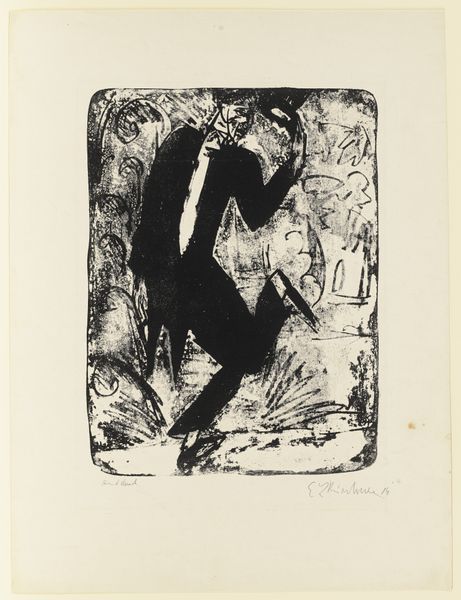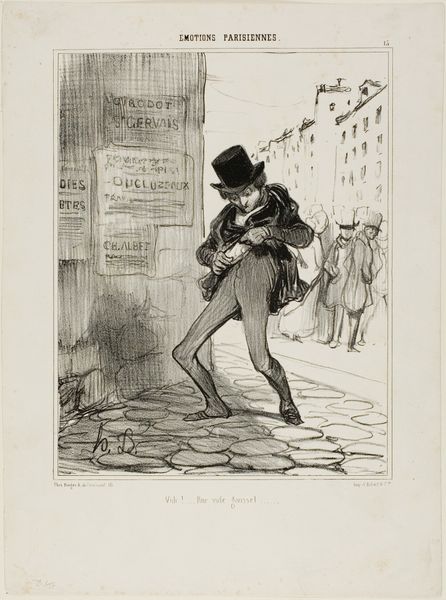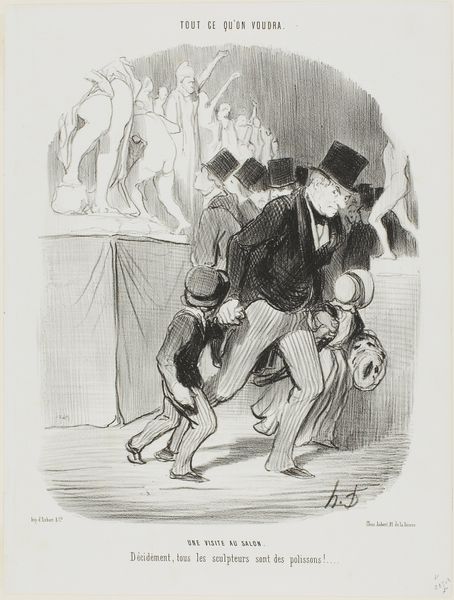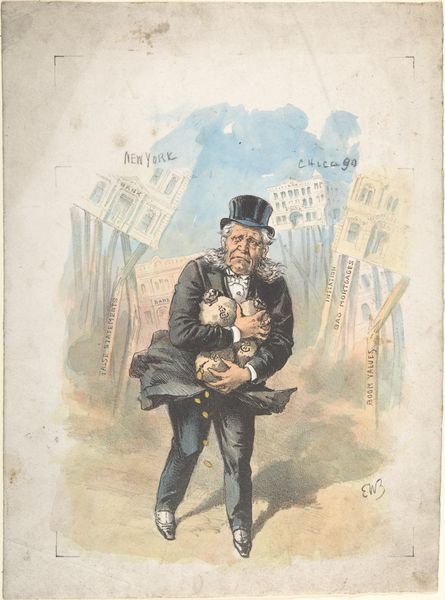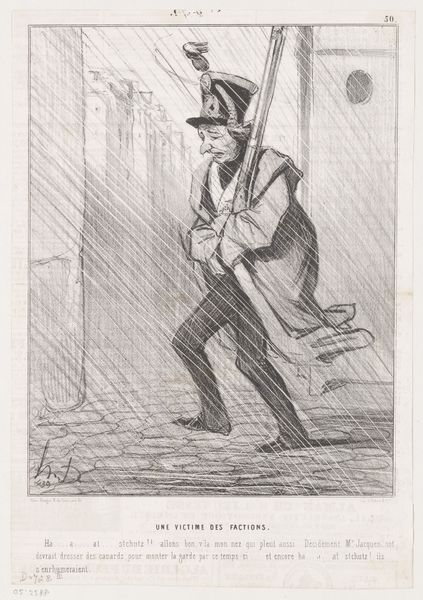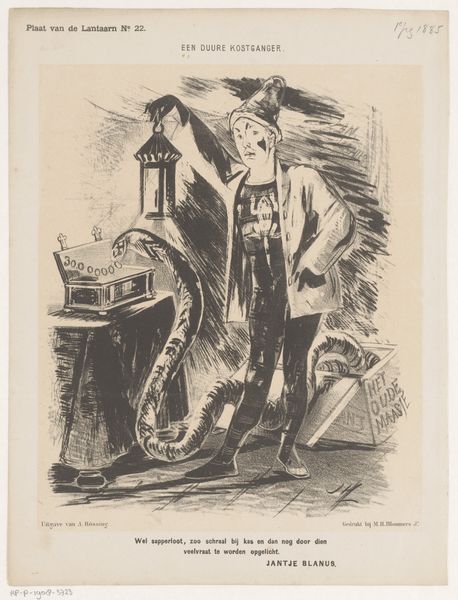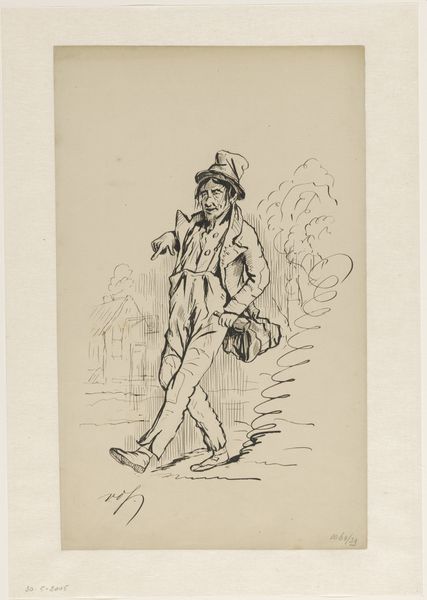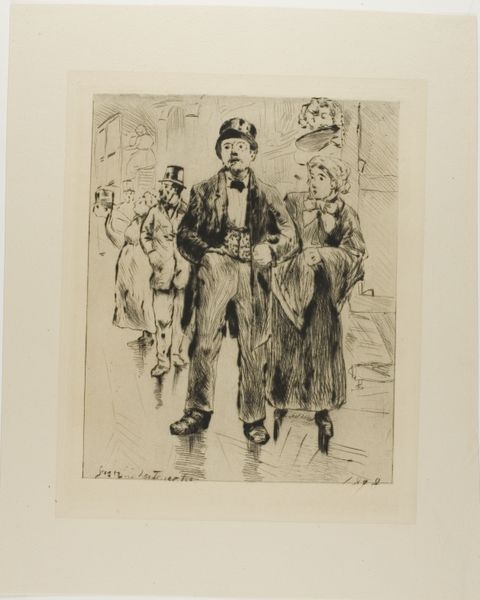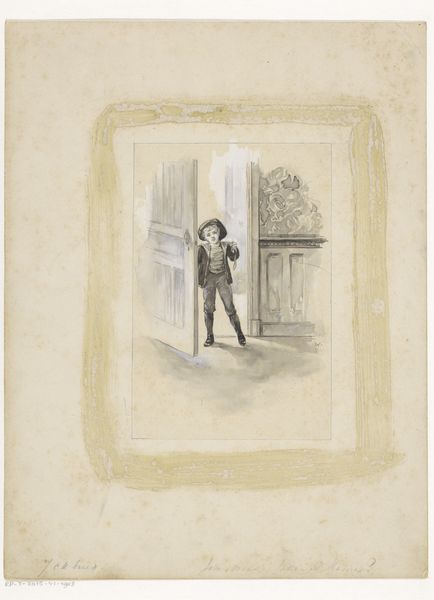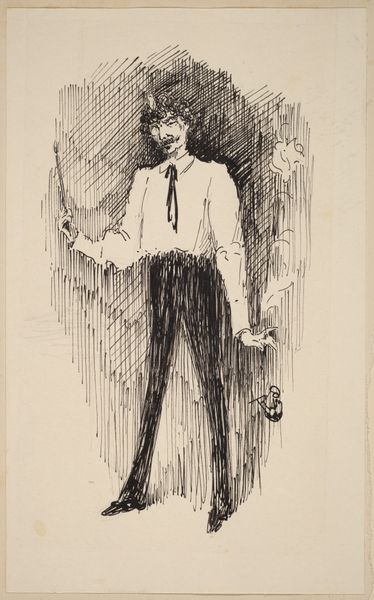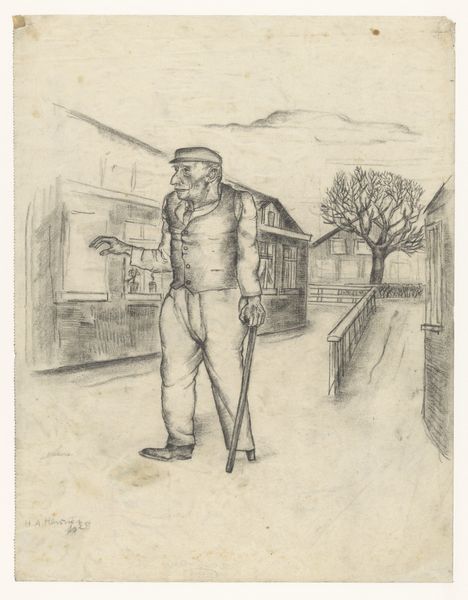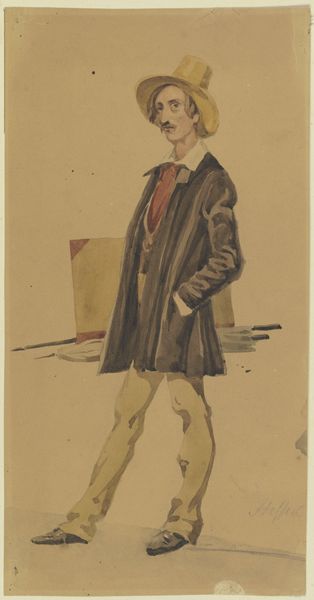
drawing, coloured-pencil, print, watercolor
#
drawing
#
coloured-pencil
# print
#
caricature
#
watercolor
#
coloured pencil
#
romanticism
#
men
#
cityscape
#
genre-painting
Dimensions: sheet: 11 7/16 x 7 3/4 in. (29 x 19.7 cm)
Copyright: Public Domain
Curator: Oh, this one's a bit of a wry hoot, isn't it? "The Opera Over! Or 'The Last Man'" by T. Gillard, dating back to 1827. The Met has it, and frankly, I'm charmed by its peculiar energy. Editor: My first thought? This piece bristles with a critique of class and consumption, even amidst its romantic stylings. There's an almost aggressive caricature at play. Curator: Aggressive? I see it as playful, though maybe with a razor’s edge. The poor chap is clearly soaked, gloves lost, probably financially ruined for the night! It's all rendered so vividly in watercolor and coloured pencil—makes the despair almost palatable, like a darkly comic pastry. The "sans coach, sans cloak, sans everything!" line, so cheeky. Editor: Yes, "cheeky" if you ignore the deeply gendered and socio-economic implications. Who *is* this man? Certainly someone who had access to the opera in the first place, so we need to remember the very exclusive nature of entertainment and privilege in Regency England. The artist is clearly highlighting a downfall, but it's crucial to ask, downfall *from what* position? Curator: Hmm, fair point. But look at the architectural detail, even dripping with rain, those glowing streetlamps. It captures the atmosphere of a late-night London downpour beautifully. And the man himself, all elbows and knees, he's a tragicomic figure, relatable in his own flamboyant way. It’s more than just class commentary. It's a universal portrait of…regret? A bit of foolhardy risk-taking gone wrong? Editor: I see the 'universal' but I also see that ‘universality’ historically serves certain perspectives. The exaggerated features and the figure's posture might play into some very loaded stereotypes regarding wealth, masculinity and vulnerability that we should absolutely not let go unchallenged today. And 'Joy's,' I’d wager that’s another layer of complexity we could unpack with discussions around desire and the policing of leisure. Curator: Well, whatever it may be, it sparks such life with its exaggerated features. There is an enduring quality about it. It does hold more questions than answers, certainly. Editor: Precisely, and maybe the artwork's true power lies in the kind of dialogue it still compels us to have, century after century.
Comments
No comments
Be the first to comment and join the conversation on the ultimate creative platform.
